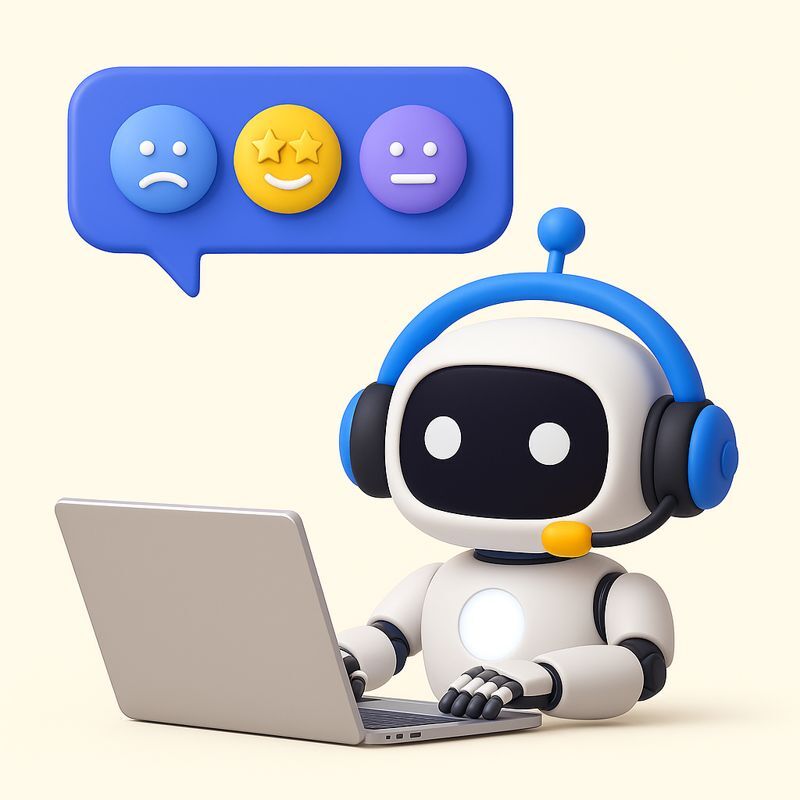Did you know that a whopping 43% of customer service representatives are unhappy in their current roles, and 35% consider leaving their jobs in the next 12 months? A study titled ‘Health of the Contact Center: A New Report on Agent Well-Being in a Customer-Centric Era’ reveals how the increasing complexity of providing customer service in the 21st century increases the pressure on your company’s frontline — customer service representatives.
In the report, the top three sources of increasing levels of workplace stress were identified as:
- Workload: 36%
- People Issues: 31%
- Work-Life Balance: 20%
Not surprisingly, the report identifies “Workload” as the top cause of workplace stress. Of the 1000 customer service representatives surveyed across the UK and US, an alarming 25% said they feel stressed at work multiple times per week.
The writing on the wall is clear: an ever-increasing workload pushes customer service teams into a fast burnout. And this doesn’t bode well for anyone. Customer service representatives are, after all, a company’s brand ambassadors. Every day hundreds, if not thousands, of customers interact with customer service representatives, and these interactions leave a lasting impression in the minds of customers.
So naturally, you do not want your company’s frontline staff to feel stressed, isolated, and abandoned.
Before we actually see what we can do to manage workload better, it is perhaps prudent to understand why and how your customer service teams actually feel stressed. With this, you’ll be better equipped to alleviate some of these stressors.
Table of Contents
- The need to meet increasingly higher expectations
- More complicated customer interactions
- Lack of proper customer service training and inadequate access to the right technology
- Consequences of the increasing workload on customer service teams
- How to manage customer service workload better
- Next steps
The need to meet increasingly higher expectations
According to this Customer Service Expectation Survey, there has been a 38% increase in the volume of customer service requests since 2018. And customer service representatives know that this increase is one of the hardest parts of their job. On top of that, the growing focus on improving the customer experience puts even more pressure on customer service reps already dealing with exploding service request volumes.
And it’s not going to let up anytime soon, either. According to our research at Hiver, 30% of customers will switch brands after just one negative experience. So it is clear that customers want high-quality, personalized experiences that meet their complex needs, and companies have no choice but to ensure that their customer service representatives manage service requests faster and better.
More complicated customer interactions
Consumers today want the same experience that they have when they speak with friends and family, with the businesses they interact with. They aren’t reaching out via a single-channel anymore. They are instead switching between channels, depending on what’s most convenient for them.
But just like their personal conversations, they expect that the context of their previous interactions shouldn’t be lost, and they should be able to simply pick up where they last left off.
Our research also shows that 12% of consumers feel when it comes to communicating with businesses; this seamless experience is rare or never happens.
With tools like self-service portals or chatbots helping customers get faster responses to basic queries, customer service representatives are left tackling only the most challenging service requests. While this approach is great for customers, it denies customer service representatives their “easy wins,” impacting their confidence and well-being.
The complicated interactions and increasing workload also leave little time for teams to informally share their learnings on dealing with challenging queries or participating in peer mentoring programs.
This leads me to my next point on the lack of training opportunities and easy accessibility of the right customer service tools.
Lack of proper customer service training and inadequate access to the right technology
According to Axonify’s (a microlearning company) research, 23% of customer service representatives receive little to no training before they hit the field. As many as 45% of the surveyed customer service representatives also believe that they lack access to the right tools to effectively do their jobs.
Because of the increasing volumes of customer service requests and rising customer demands, there is always a need to get more customer support representatives out on the field faster.
It is evident that all these workplace stressors are interconnected by one thread — increasing workload.
Consequences of the increasing workload on customer service teams
Fluctuating productivity (subsequently poor quality of customer service)
The workload handled by customer service teams varies on a day-to-day basis. Teams will always have busy times and quieter periods, rather than a consistent inflow of customer service inquiries.
During busier times, customer service representatives handling large workloads may be less productive than they should be as they struggle to meet the increasing demands. And this may, in turn, have a negative domino effect.
In a rush to boost productivity, reps may rush through calls and emails, providing inferior customer service.
Poor after-call work
What is after-call work? After-call work usually refers to administrative tasks performed by customer service representatives in between or after completing customer service interactions. These may include updating customer details in a CRM/support software, creating reference notes on specific customer interactions, or analyzing data to create reports and forecasts.
These are time-consuming tasks, yet, they are as important, if not more, for customer service agents to do their jobs well.
Unfortunately, in most circumstances, with increasing workloads and poor workload distribution, there is little to no time left for after-call work.
How to manage customer service workload better
In an ideal world, every customer service team member would have an equal amount of work (so no one’s overburdened), the right people would be working on the right tasks (so everyone’s maximizing their abilities), and all customer service requests would be responded to on time.
The real world, as we have seen, is far from ideal. The workload is continuously increasing; someone from the team may not be available, new work might crop up, and priorities may change.
At times like this, it’s more important than ever to be able to see where the gaps are, which reps are overloaded, and which ones are available to take on more.
And that’s why we are excited to introduce to you — Workload Distribution.
What is Workload Distribution?
Workload Distribution in Hiver allows you to see how conversations are distributed in real time within your customer service team in a single glance.

With this new Workload Distribution feature, you can easily and quickly optimize your team’s workload for maximum efficiency and faster responses to your customers.
You can also get a drill-down view of the conversations being handled by each team member to gauge if they are handling the right type of conversations or reassign them if required.

How does Workload Distribution work in Hiver?
For each View that you have created in Hiver, you can simply switch to the Workload Distribution mode by clicking on the icon and see how conversations from a specific customer or issue are distributed within your team in a single glance.

How can Workload Distribution help your team?
As an example, let’s say that you manage a customer service team at an e-commerce store. You may have customers of all types, but some high-value customers may need to be prioritized over others in the customer service queue.
To help you quickly prioritize these customers over the others, you can create a View in Hiver. Think of Hiver’s Views as Gmail Filters, but with superpowers.
This View will now only show you emails coming in from your high-priority customers. And for every View that you create in Hiver, you get a Workload Distribution mode.
Switching to the Workload Distribution mode will show you how all the open and unresolved conversations from your high-priority customers are distributed within your team.
Doing this will help you:
- Analyze your team’s workload and redistribute it.
- Find unassigned conversations and assign them immediately.
- Analyze SLA-violated conversations for each assignee using workload distribution for the “Overdue” View to proactively prevent problems from snowballing.
Benefits of Workload Distribution
Avoiding bottlenecks: Workload Distribution can help you find bottlenecks in your customer service workflows and ensure your projects have enough resources to meet their deadlines and have the flexibility to shift priorities.
Powerful resourcing insights: The real-time, easily accessible data in the Workload Distribution mode can help you determine which team members are operating under-capacity and available to take on more work.
Easily re-prioritize work: You can quickly and easily re-assign conversations to balance workload from the drill-down view with a single click.
Make more informed decisions: As a manager, you can accurately assess your customer service team’s bandwidth for any given period to make more accurate decisions on your customers’ needs.
Next steps
- If you’re an existing customer of Hiver and want to know more about Workload Distribution, click here.
- If you’re new to Hiver and want to try it out, click here to get started with our free 14-day trial.
 Skip to content
Skip to content











